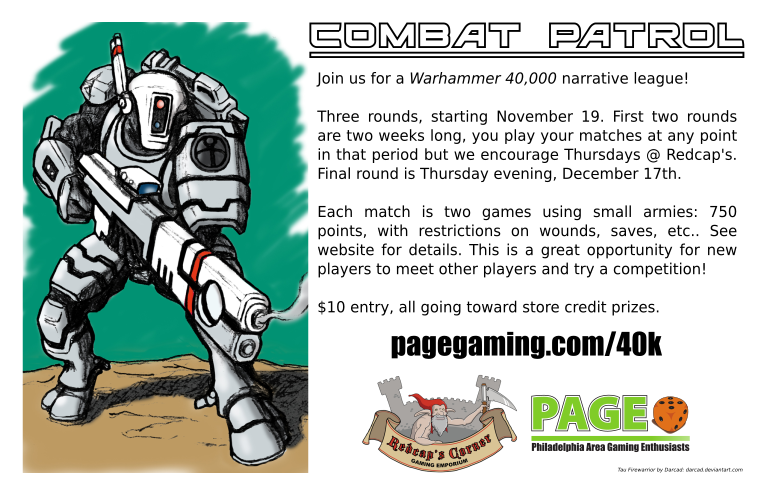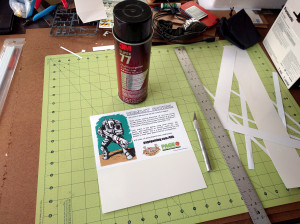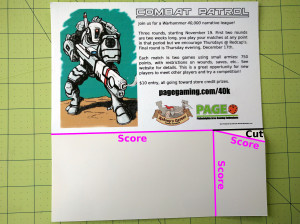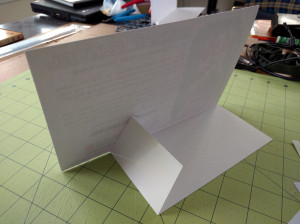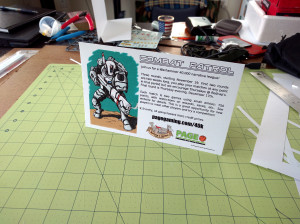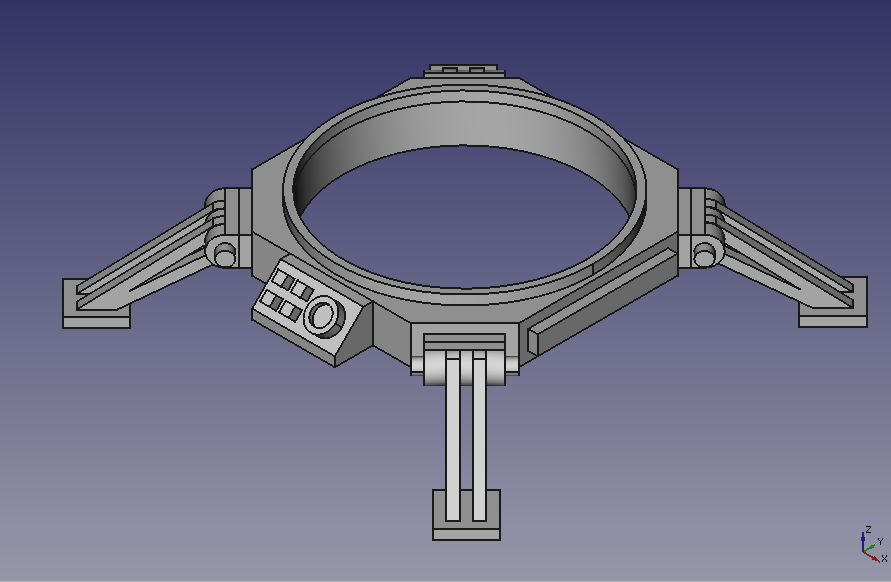
Yesterday Colin and I got started on construction for the July PAGE/Redcap’s 40k event: Mortalis Solypsus. A bit over-ambitiously, we intend to run a full day of Zone Mortalis-styled games, capturing the fighting inside the Lab, Mine, and other installations of Solypsus 9. Note that the fluff here is that you’re fighting in huge facilities. Vehicles can fit through part of them, but may not be able to make it into narrower sections or rooms. Think NORAD, not office building.
Everybody should take note of the draft rules being collected on the event page. There are a number of restrictions and special rules to suit the indoor fighting. A basic restriction is that large vehicles are outright not permitted. Further, even permitted larger models like Dreadnoughts will not have full mobility throughout a board as they won’t fit through doorways and such. An example special rule is that blasts and templates gain Shred, and only scatter and take effect within the confines of the walls.
Although there’s a long way to go, we wanted to post some notes and pictures for both players thinking about what armies to prepare, and for the other hobbyists building boards for the event to follow along. As the boards are being constructed by several people and using a variety of styles, they will definitely vary a bit. But this is roughly how most of them will work.
If you are committed to playing in the event, please sign up on the Doodle poll so we can plan appropriately.
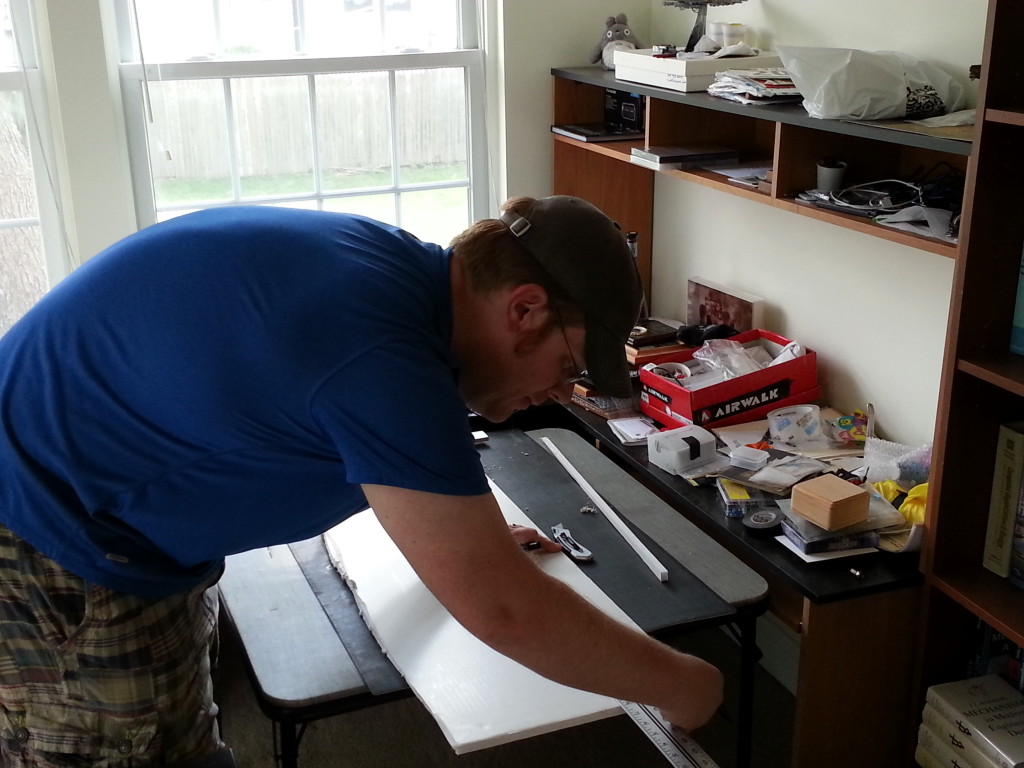
Colin starts measuring out walls.
Layout
The game boards will all be 4×4, to suit the 1000 point armies. They are made up of 2×2 or 1×1 tiles, to give some variety in laying out a board. Each tile has a fixed layout of walls making corridors, generally along an 8×8 or similar grid. This gives just enough room for small vehicles such as a Rhino to move through, but in a somewhat restricted way. With other models present or scatter terrain such as debris, containers, or consoles, it may be difficult to have them turn in place and such to head in a new direction.
Line of sight is very limited by the walls. A number of walls do have doorways, but they’re staggered such that even with all of them open there is no line of sight across the board. Indirect attacks are in general not permitted, see the rules for details. Close up shooting and assault will definitely be emphasized compared to a normal game.
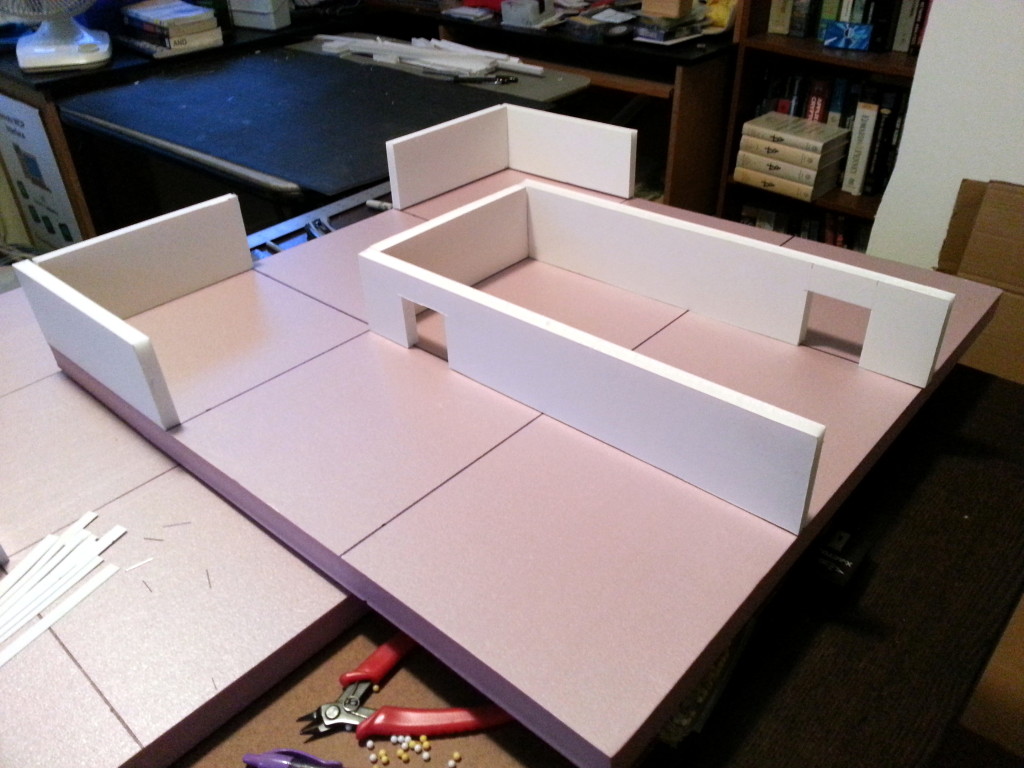
One of Colin’s 2×2 tiles.
Doorways
The doorways on our canonical board design are 2 inches wide and tall. This means anything up to about a Space Marine Centurion can easily move them them. Dreadnoughts, monstrous creatures, and other large models simply won’t fit. Although the tile designs generate discourage fully enclosed spaces, it will certainly be possible for troopers to huddle up away from a bigger foe and force it to take a roundabout route to them and the objective they are defending for the corpse god and/or false idols.
It doesn’t matter for gameplay purposes because they’re treated as an infinite surface, but for building purposes, the walls should be 3 to 4 inches tall. Many models need at least a 3″ wall to look right. At 4″ though the walls start to feel pretty cavernous against infantry, which might be an appropriate look for some themes.
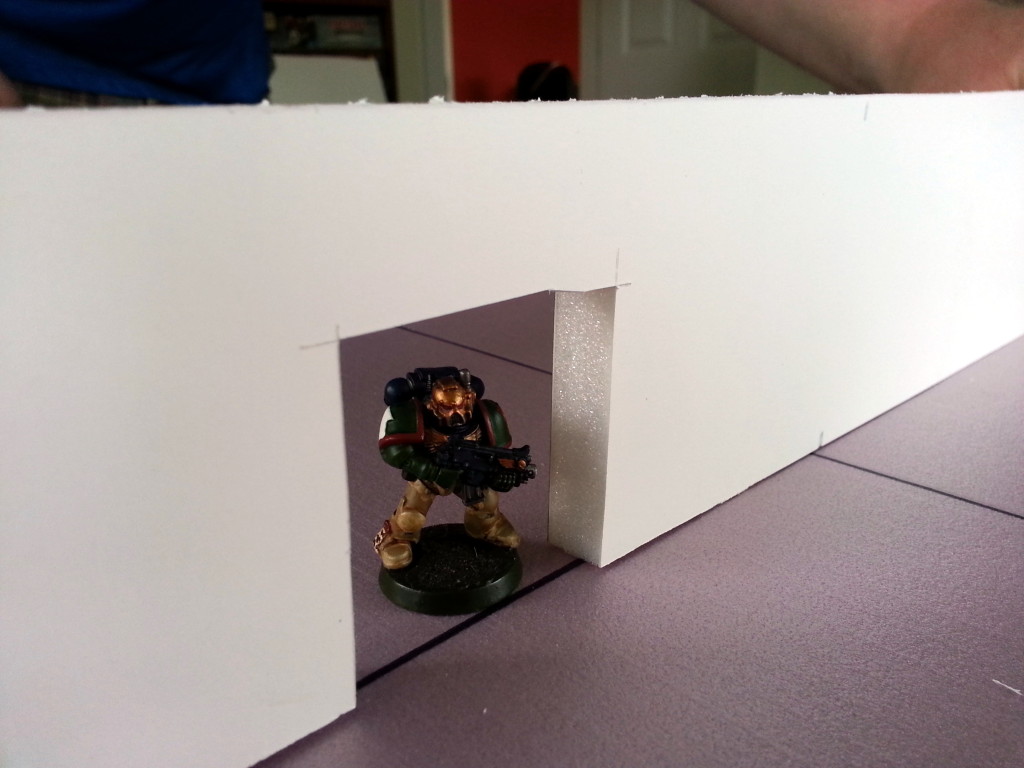
A Kingbreaker checks out his new digs.
Burn It Down!
Again, take a look at the draft rules to see some of the changes and special effects. And, if you are committed to participating, please sign up on the Doodle poll so we know how many people to expect.
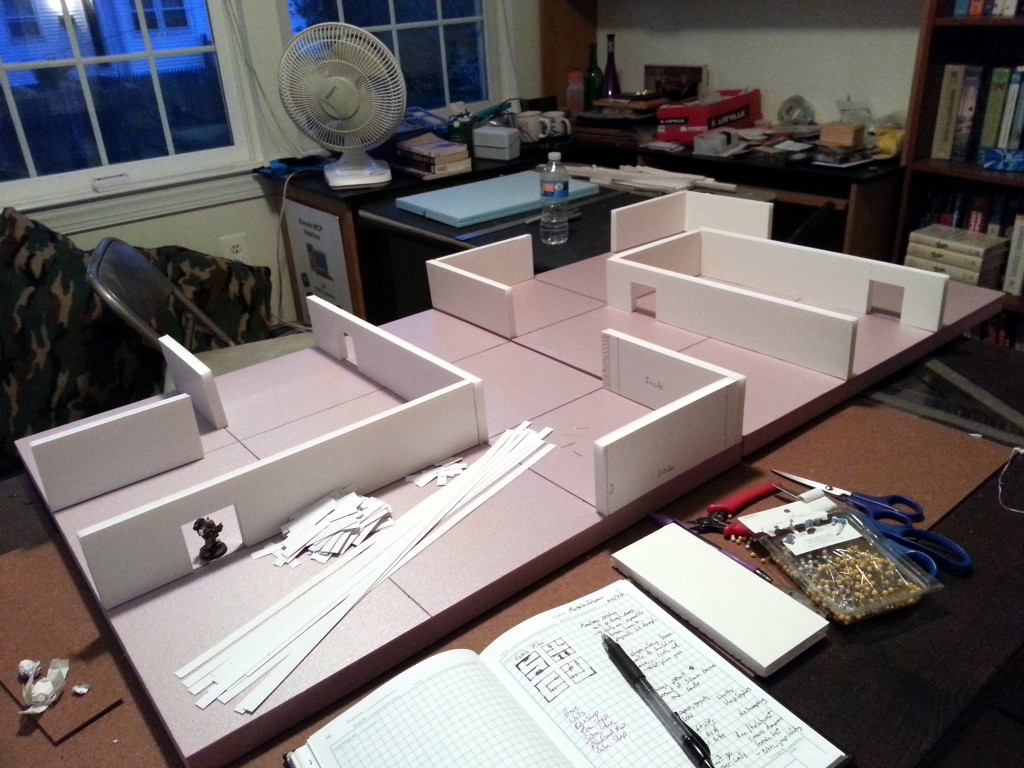
Two WIP tiles together.
